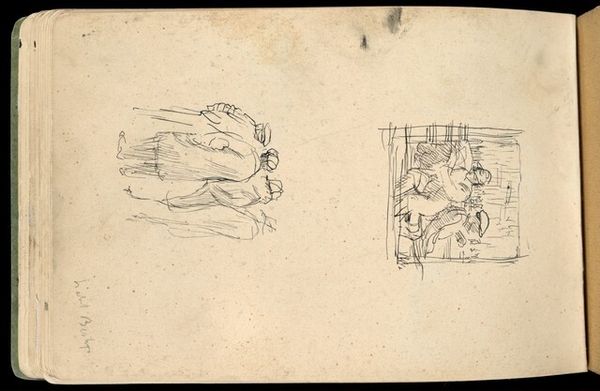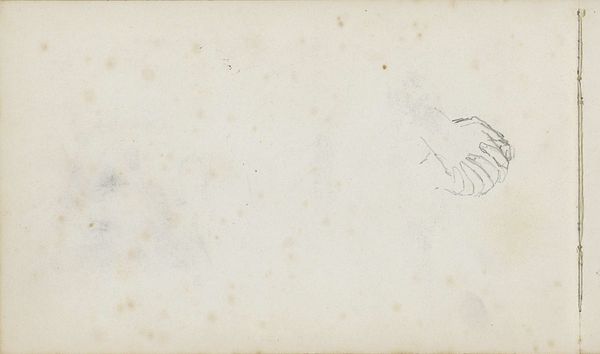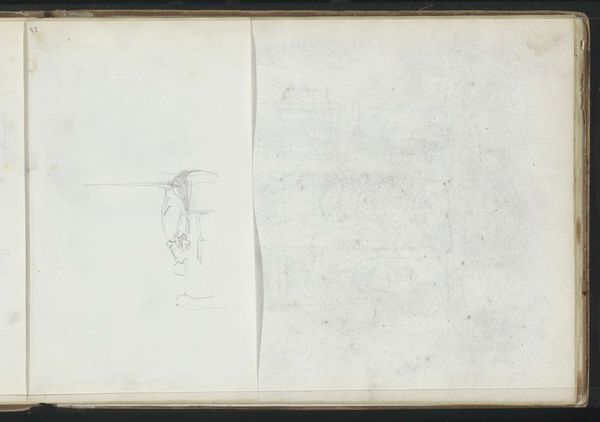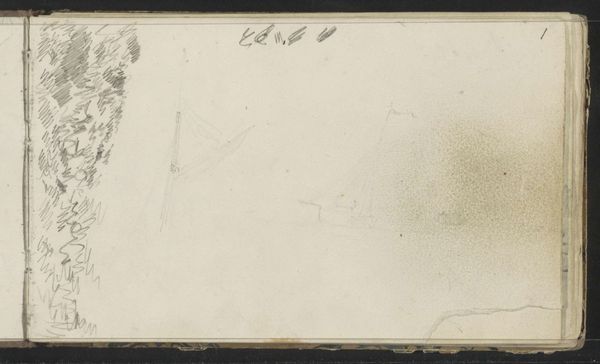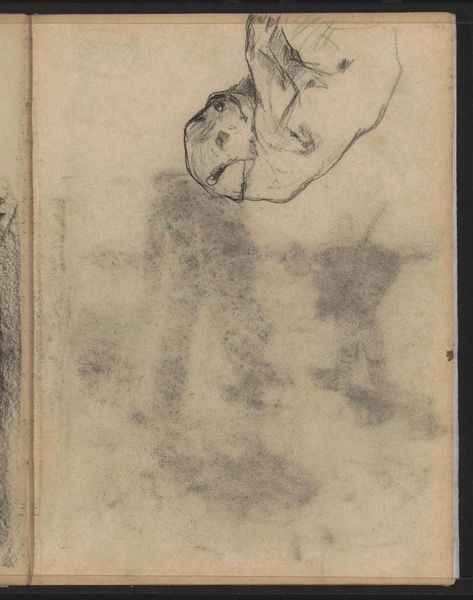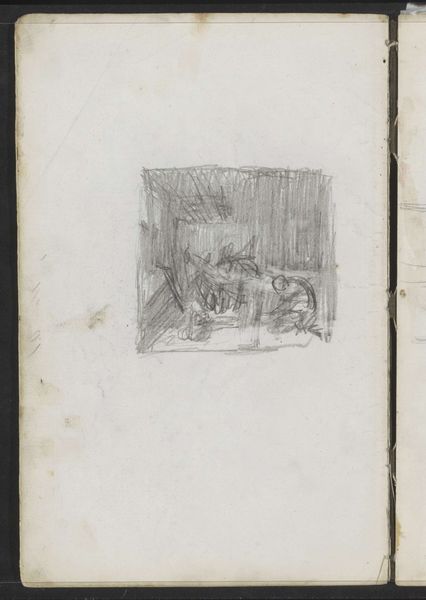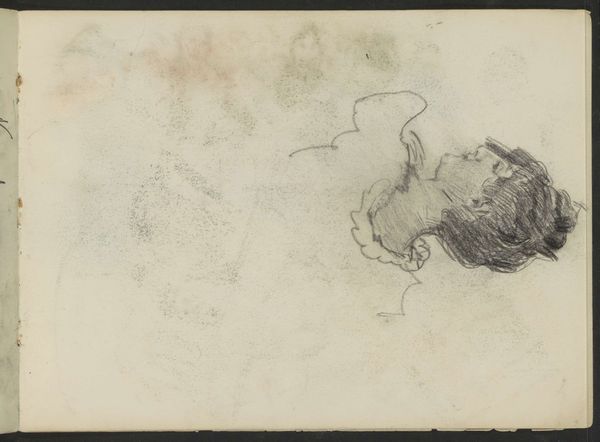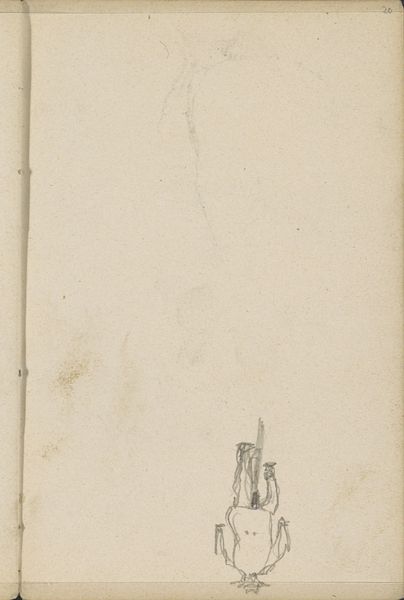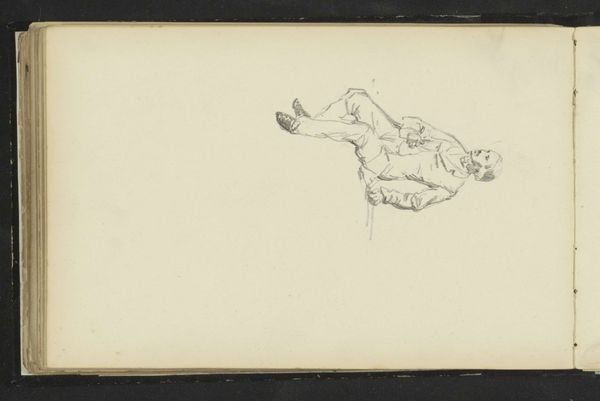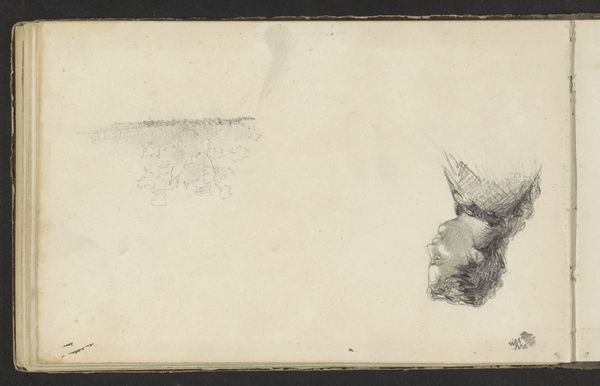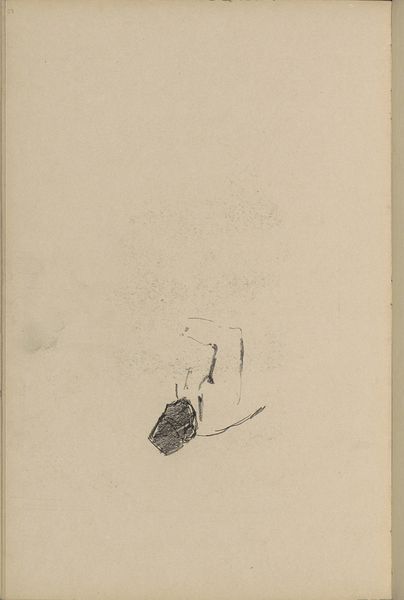
drawing, paper, pencil
#
portrait
#
drawing
#
paper
#
pencil
#
line
Copyright: National Gallery of Art: CC0 1.0
Editor: Here we have a page from Isabel Bishop's "Early Sketchbook," likely created sometime between 1928 and 1936. It’s a pencil drawing on paper, seemingly a quick study of figures. The style feels very direct and intimate...almost as if we’re glimpsing something private. What catches your eye in this work? Curator: Oh, Bishop’s sketchbooks! I could get lost in them for hours. The immediacy of the line, the vulnerability of the subjects…it’s like eavesdropping on her artistic process. See how she captures the essence of those figures with just a few strokes? There’s a raw energy, wouldn’t you say? It makes me wonder about their story, doesn't it? Editor: Absolutely! It's intriguing how little detail there is, and yet you still feel a connection to these individuals. What is the rectangular shape that encloses the drawing meant to indicate? A window, perhaps? Curator: Possibly! It could also represent the constraints—literal or metaphorical—that Bishop felt at the time. Perhaps these individuals were viewed in confinement? Bishop used sketching as an escape, and as she gained notoriety would eventually create what were termed ‘rebellious women’ doing activities deemed as 'unconventional'. I see the possibility that there are signs in this sketch alluding to the possibility of 'confinement' from society's expectations. Editor: Interesting... It certainly provides much to consider. Curator: Sketchbooks, especially early ones, reveal so much of an artist's developing vision, struggles and all. Every stray line, every erased mark is a breadcrumb that gives clues as to their thinking. Editor: Yes, seeing this early work does make you want to dig deeper and better understand her artistic practice overall.
Comments
No comments
Be the first to comment and join the conversation on the ultimate creative platform.
